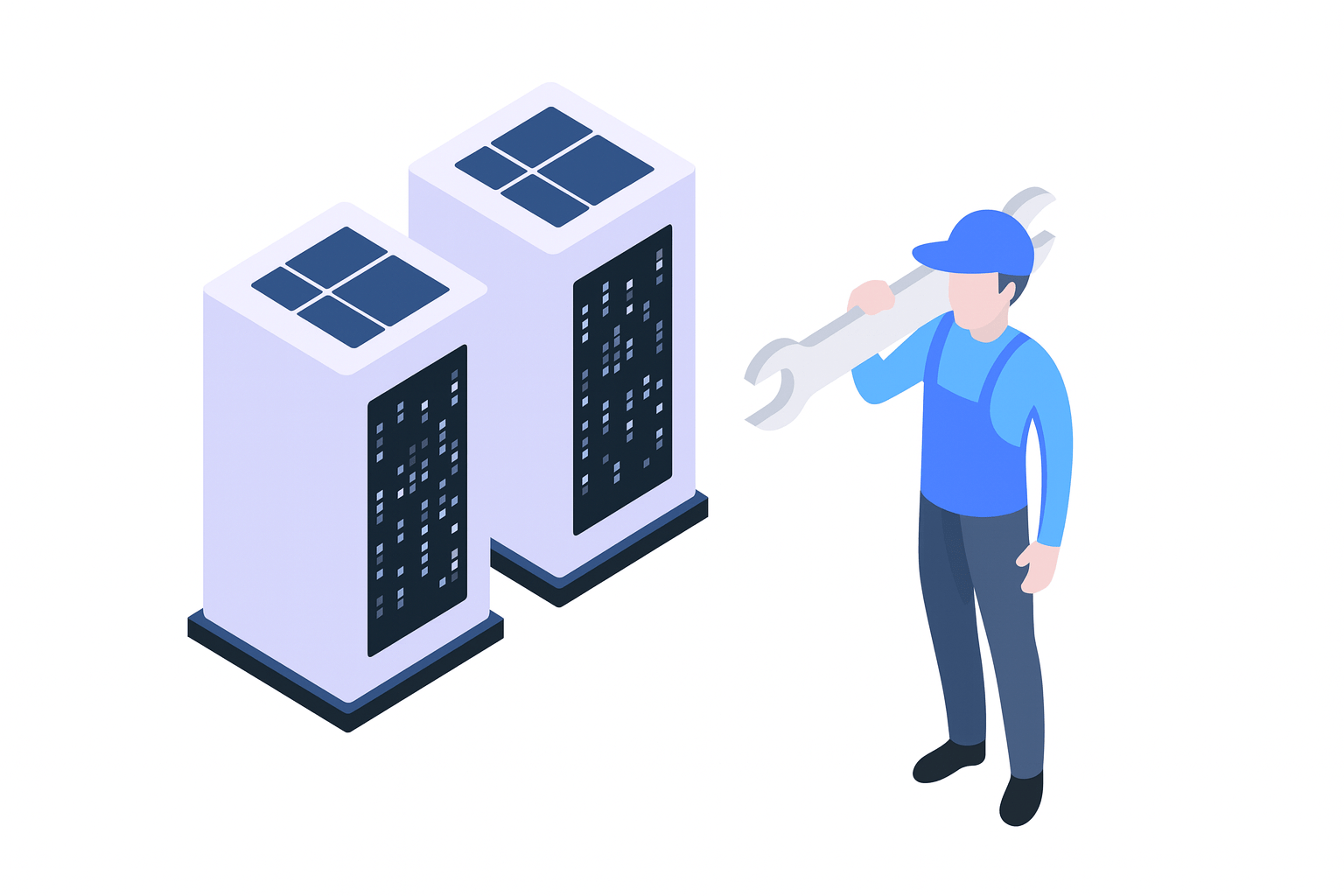
Why DDoS Protection Matters in 2025
The digital economy in Europe has reached a stage where uptime, performance, and security are no longer optional—they are mission-critical. Whether you operate an eCommerce store, manage a SaaS application, deliver fintech services, or run a global gaming platform, your customers expect uninterrupted, lightning-fast access at all times. However, one of the most persistent threats to this continuity is the Distributed Denial of Service (DDoS) attack. In these attacks, malicious actors flood servers with illegitimate traffic until they either crash or become painfully slow, leaving businesses vulnerable.
The impact of such attacks goes far beyond technical disruption. Studies estimate that businesses lose thousands of euros for every minute of downtime. Beyond financial loss, there is reputational damage, erosion of customer trust, and the potential loss of long-term contracts. With attackers now using Layer 7 application-level floods, multi-vector botnet amplification attacks, and stealth-based bypass techniques, it is clear that outdated firewalls or generic protections no longer suffice. This is where DDoS Protected Dedicated Server Europe solutions come into play.
Unlike standard dedicated hosting, a DDoS protected dedicated server in Europe combines raw performance with integrated anti-DDoS protection and advanced mitigation services. These servers ensure that malicious traffic is filtered in real time while legitimate users continue to enjoy smooth, low-latency performance. For mission-critical businesses, this dual focus on performance and protection ensures that platforms remain online, even during sophisticated attack attempts.
A common question arises when businesses consider upgrading: What is the difference between a normal dedicated server and a DDoS protected dedicated server in Europe? The answer lies in proactive defense. While a normal dedicated server offers computing power, storage, and full administrative control, a DDoS-protected server adds intelligent filtering, scrubbing centers, and real-time defense systems designed to withstand both large-scale and targeted attacks. This makes it invaluable for industries like eCommerce, online banking, healthcare, and gaming, where downtime is simply not an option.
In this guide, we will break down how DDoS mitigation services function, explore the key benefits of premium anti-DDoS solutions, and share insights into choosing the best provider for your business in Europe. By the end, you will see why investing in a DDoS Protected Dedicated Server Europe in 2025 is not just a defensive measure—it is a strategic growth enabler for businesses aiming to stay resilient and competitive in today’s digital-first economy.
What is a DDoS-Protected Dedicated Server?
A DDoS-protected dedicated server is a hosting solution designed specifically to defend against Distributed Denial of Service attacks, which aim to overwhelm a server by flooding it with excessive traffic. Unlike a standard server setup, these machines are equipped with built-in anti-DDoS protection that continuously monitors traffic, detects anomalies, and automatically blocks malicious requests before they disrupt service.
The main advantage of this setup is reliability. With real-time mitigation services, your website, application, or platform remains accessible to genuine users even when under heavy attack. Businesses that rely on continuous uptime such as eCommerce platforms, SaaS providers, and financial institutions benefit the most from this level of resilience.
Key features include:
- Advanced traffic filtering that separates bots and malicious requests from legitimate visitors.
- Layer 7 defenses that protect applications from more complex, targeted attacks.
- 24/7 monitoring and automated response systems to ensure round-the-clock security.
- High-bandwidth capacity that absorbs large-scale volumetric attacks without slowing performance.
Another frequent question business owners ask is: How does a DDoS-protected server actually work? In simple terms, the server routes incoming traffic through a sophisticated mitigation layer. Suspicious requests are scrubbed and discarded, while legitimate ones are allowed through, ensuring users never notice the attack happening in the background.
By combining these features, a dedicated server with DDoS protection provides the stability and security that modern European businesses require in 2025.
Types of DDoS Attacks and How Mitigation Works
DDoS attacks come in several forms, each targeting different layers of a network or application. Understanding these is essential for recognizing why specialized servers are needed:
- Volumetric Attacks – These aim to overwhelm a server’s bandwidth by sending massive amounts of traffic, often in the range of hundreds of gigabits per second. The goal is simple: consume all available resources and force downtime.
- Protocol Attacks – Instead of overwhelming bandwidth, protocol-based attacks exploit vulnerabilities in the way servers and networking equipment handle requests. Examples include SYN floods or Ping of Death attacks, which drain server resources and disrupt communication channels.
- Application-Layer Attacks – More sophisticated, these attacks target specific applications or services, such as HTTP floods that mimic normal user traffic but at scale. They are harder to detect because the traffic appears legitimate.
Mitigation strategies are built into DDoS protection services to counter these threats:
- Suspicious traffic is rerouted through a scrubbing center.
- Advanced filters identify and block malicious packets.
- Clean traffic is passed on to the dedicated server with minimal delay.
- AI-driven detection systems continuously adapt, learning from new attack patterns in real time.
This leads to another common query: Can DDoS protection stop all types of attacks? The answer is that while no system can claim 100% immunity, modern mitigation strategies cover the vast majority of volumetric, protocol, and application-layer attacks. Providers in Europe now boast 99.9%+ mitigation success rates, drastically reducing risks.
This layered defense ensures businesses stay online, even under attack.
Key Benefits of DDoS-Protected Servers in Europe
Guaranteed Uptime & Business Continuity
With DDoS-protected dedicated servers, businesses benefit from continuous availability, even during heavy attack periods. Automated mitigation ensures websites and applications remain online, preventing costly disruptions.
Protection Against Revenue Loss
Every minute of downtime can mean lost sales, leads, and customers. By filtering malicious traffic before it reaches the server, businesses safeguard revenue streams and minimize risks of operational interruptions.
Enhanced Customer Trust
Customers value security and reliability. Hosting on a dedicated server with anti-DDoS protection signals a commitment to safeguarding user data and ensuring uninterrupted service, which strengthens brand reputation and client confidence.
Scalable Bandwidth & Mitigation Capacity
European providers often offer high-bandwidth dedicated servers capable of absorbing massive attack volumes. As threats grow in scale, businesses can scale their protection capacity without compromising performance.
Compliance with European Cybersecurity Standards
Many industries in Europe must comply with strict regulations such as GDPR and NIS2. DDoS mitigation services help meet these compliance requirements by protecting sensitive customer data and ensuring network resilience.
This naturally leads to the next business consideration: Why should you choose a DDoS-protected server in Europe instead of relying on a cheaper shared hosting plan? The answer lies in risk. Shared hosting leaves you exposed because protection is not individualized. A DDoS-protected dedicated server isolates your resources, prioritizes your uptime, and offers enterprise-level protection tailored to European business regulations.
DDoS Protection Services in Europe: What to Expect in 2025
The year 2025 marks a shift in how European providers deliver DDoS mitigation services. Businesses considering investment often wonder: What features should I expect from a modern DDoS-protected dedicated server provider? Here are the advancements to look out for:
Automated AI-Driven Mitigation
Providers are leveraging advanced AI algorithms to detect and neutralize malicious traffic in real time. Automated mitigation reduces human delay, ensuring attacks are stopped before they impact your services.
Global Scrubbing Networks with Low Latency
Leading providers maintain worldwide scrubbing centers to reroute and filter traffic. This ensures legitimate user requests pass through seamlessly, while attack traffic is blocked—all without adding noticeable latency.
Layer 7 DDoS Protection with WAF Integration
Application-layer (Layer 7) attacks are increasingly common, targeting login pages, APIs, and shopping carts. By integrating Web Application Firewalls (WAF) with DDoS defense, businesses gain protection at both the network and application levels.
Customizable Protection Tiers
Not all businesses have the same needs. Providers now offer flexible packages from cost-effective plans for SMBs to advanced mitigation for industries like gaming, finance, and eCommerce.
24/7 NOC Monitoring and Support
European DDoS protection services emphasize continuous monitoring via dedicated Network Operations Centers (NOCs). These teams respond instantly to anomalies, ensuring threats are mitigated before they escalate.
With these advancements, DDoS protection services in Europe provide unmatched resilience and reliability for businesses of all sizes.
Choosing the Right DDoS-Protected Dedicated Server Provider
When evaluating providers, businesses often ask: Which European country is best for hosting a DDoS-protected server? The truth is that Germany, the Netherlands, Romania, and France remain top hubs thanks to world-class data centers, low-latency connections, and strict cybersecurity standards.
Here are the main factors to consider:
- Premium Mitigation Services – Prioritize providers that include enterprise-grade DDoS mitigation as part of their package.
- Multiple Data Center Locations – Ensure redundancy and low latency for users.
- SLA Guarantees – Look for clear commitments around uptime and mitigation response times.
- Transparent Pricing – Choose between flat-rate vs. usage-based plans depending on your traffic.
- Scalability for Growth – Confirm the ability to scale protection as your needs evolve.
Another concern is cost: Are DDoS-protected dedicated servers expensive compared to normal hosting? While they are pricier than standard shared hosting, the cost is far less than the potential financial and reputational damage caused by an attack. In fact, most European providers now offer tiered pricing, making enterprise-level protection more affordable for SMEs.
Best Industries That Benefit from Anti-DDoS Protection
- eCommerce & Retail – Online shops face abandoned carts and lost revenue if downtime occurs.
- Finance & Banking – Transactions and sensitive data must remain secure and accessible.
- Gaming & Esports – Competitive platforms are frequent targets; downtime disrupts events and players.
- Healthcare Providers – Patient portals and record systems must remain online for safety.
- Government & Enterprises – Public services and corporate operations cannot afford disruption.
This is why many businesses ask: Which industries benefit the most from DDoS-protected servers? The short answer is: all industries that rely on uptime, but the risk is highest for sectors handling financial transactions, personal data, or global traffic.
Future of DDoS Protection in Europe (2025 and Beyond)
Looking ahead, the future of DDoS protection will evolve in tandem with new threats. Businesses frequently ask: Is DDoS protection future-proof? The reality is that while no solution is eternal, modern systems are adaptive, AI-driven, and designed for scalability, making them resilient to evolving threats.
Key trends shaping the future include:
- AI & Machine Learning Integration for predictive analytics.
- Emerging 5G Attack Vectors due to faster connectivity.
- Hybrid Defense Models that combine cloud and on-premises protection.
- Tighter EU Regulations requiring mandatory adoption of mitigation.
- Zero-Trust Architectures that validate every request.
Why You Should Act Now
Investing in a dedicated server with DDoS protection is no longer a luxury it’s a necessity. As attacks grow more frequent and complex, relying on outdated defenses is risky. European businesses must prioritize anti-DDoS solutions to safeguard uptime, revenue, and customer trust.
If you’re still debating, consider this final question: Is it worth upgrading to a DDoS-protected dedicated server now, or should I wait? The truth is, the cost of waiting could be catastrophic. Every day without protection leaves your business exposed. By acting now, you’re not just buying hosting—you’re investing in a fortress against one of the internet’s most dangerous threats.

